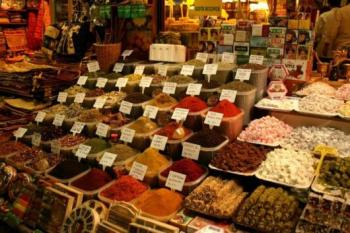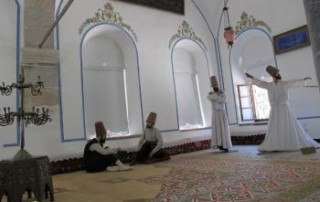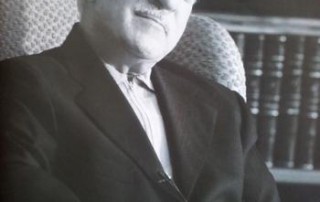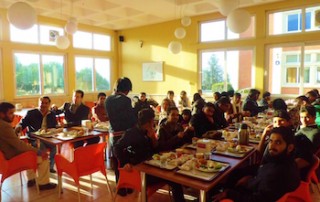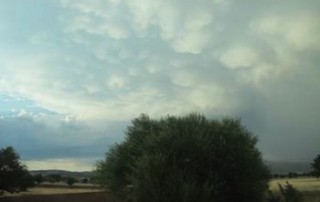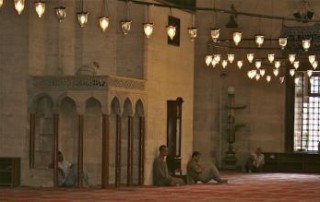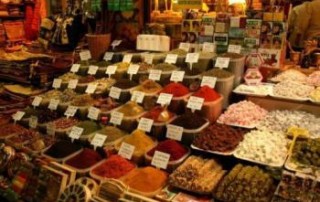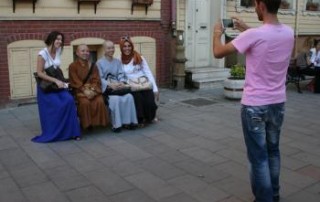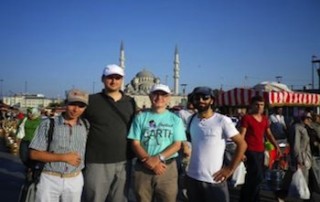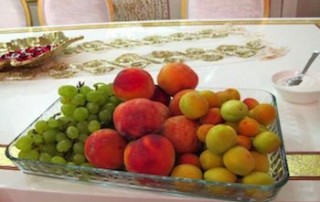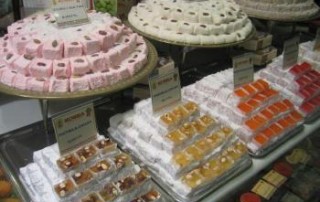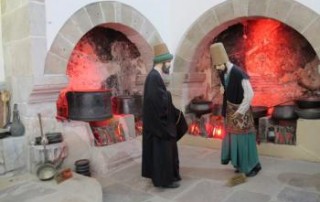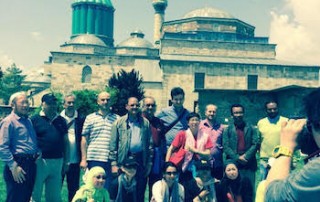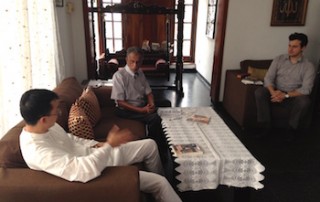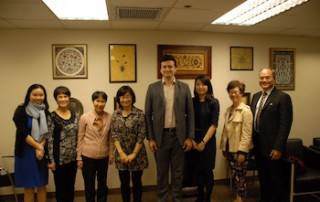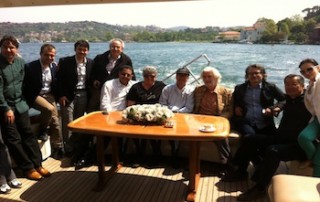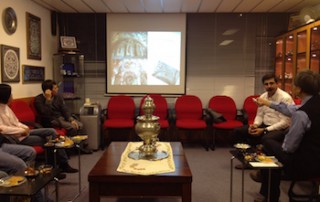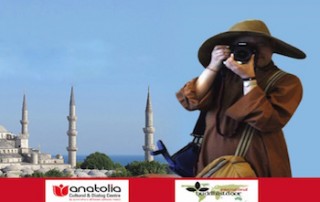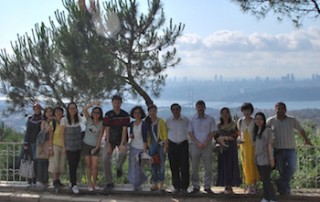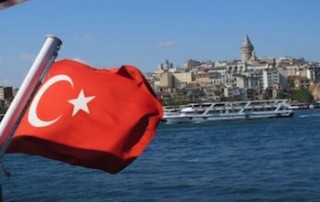Themes of Dialogue “Even if We Have Different Color,
but We are the Same”
Posted on 15/10/2012
DETAILS
Editorial – Themes of Dialogue: Turkish culture, Buddhism, and Muslim friendship
One of the most urgent initiatives in the world today is interfaith dialogue. I know many good Christians, several Muslims, even more agnostics and atheists who have made an invaluable difference in my life. They are my friends and mentors, and I hope I’ve done enough that
they may see me in a likeminded way. Dialogue isn’t something theoretical, although it is a popular topic in theological seminaries and philosophy departments these days. What really stimulates dialogue is rarely an intellectual insight but an unexpected encounter with the Other, one that catches you off-guard in its spontaneity and naturalness. That was one of the main themes during and after our Buddhist delegation’s trip to Turkey. With so many friendships forged and bridges built, it’s no wonder that the articles we commissioned share a common idea: the common ground we share is right beneath us; we simply need to take off our artificial shoes and walk barefoot so we really feel it.
Under the Turkish Sky is a discussion about the dazzling shades of blue that permeate Istanbul life. One of our trip members, John, was so determined to make the most out of being in an Islamic culture that he also participated in Ramadan. Our exchange with Turkish Muslim families prompted reflections about the Islamic faith, from a Buddhist perspective. All of us admired Rumi’s beautiful poetry and profound teaching, whilst some of us were more inclined to philosophical questions about Buddhism in the light of Islamic doctrines or how we can plant seeds of understanding in this horrifically fractured world, where great violence and tremendous suffering is inflicted on a daily basis because people just won’t sit down in one room and talk to one another.
Finally, to round everything up, Buddhistdoor International is hosting, in collaboration with the CBSAA, an interfaith dialogue at the Jockey Club Tower in The University of Hong Kong this November. We will have distinguished guests like Professor Lee (who, many may not know, is an aficionado of Turkey and has written books about the Turkic culture) and Ven. Dhammapala talking about their experiences of Turkish and Muslim culture, as well as representatives from the Anatolia Cultural and Dialogue Centre coming to join in the sharing. Registration is absolutely free too. If you are in Hong Kong, don’t miss out on this rare chance for a Buddhist-Muslim exchange in Asia’s world city. I promise this will be a special encounter indeed.
七八月天頂著艷陽烤炙匆匆走一回,對土耳其的印象,除了輪廓分明、長相端好的一張張如希臘雕像般的俏臉外,留在腦海裡多多少少的記憶是用顏色貯存的。
有人喜歡藍
土耳其最當道的顏色是紅和藍。
土耳其國旗是鮮紅色的。紅色是伊斯蘭教的流行色,據說土耳其有百分之九十幾人口是伊斯蘭教徒,而此行的緣起就是土耳其一個叫「Anatolia文化與對話中心」的民間組織邀請成行,目的就是請我們這些香港佛教徒到彼邦與伊斯蘭教徒作民間交流,而且管吃管住,有求必應。
至於藍色,土耳其有一種藍色遠近馳名,甚至有「土耳其藍」(Turkish Blue)之稱,足見其代表性。他們真的很喜歡藍。
我想說說藍。土耳其的藍,讓我改變了對藍色的觀感,那通常並非我較喜愛的顏色。有說因為土耳其地大缺水(淡水資源)──此行就參觀了地下水庫古蹟和乾旱的石質地貌,而藍色讓人聯想到水,所以很受歡迎。也因為擁有偌大的海岸線和穹蒼,土耳其人成天活在這美美的藍色中,很自然以藍為尚吧。那裡又盛產藍藍靛靛的綠松石,是自古以來的珍寶。土耳其特產、代表祝福的「魔鬼眼」也是藍色的,不過是屬於海水深藍,不是「土耳其藍」。
最大片的藍是天上的。當走在古希臘Ephesus遺址中,深深領教了晴空萬里是什麼樣滋味:差一點攝氏40 度高溫下,天空的蔚藍搭配大理石的雪白,反映著讓人睜不開眼的陽光白花花一片……。只難為了領隊的Yelbay先生和隨團義工們,他們正在守齋戒,整個齋月裡每天從日出至日落的時間都不吃不喝,忍耐著唇乾舌燥、體力虛耗之餘,還要領我們到處遊逛,不時詳細的講解。他們熬著體力與耐性的考驗,一心只基於信仰,想做布施,行善事,結善緣,也不求功德,令人肅然起敬,真是佛教徒很好的學習對象 。
伴隨著汗濕的滿目藍白的情調,同樣亦發生於棉花堡,另一個參觀的景點。棉花堡那裡因為有地下水湧泉,看著涼快,又可站到清澈的泉水裡,倒不覺得汗臭難耐;還可見到遠方靛藍的湖泊,與九寨溝同樣的鈣化地貌,好漂亮的一面面鏡子般。只不知該說那是湖水藍或湖水綠,中國人常常是藍綠不分的,像「青花」、「青天」、「青金石」等,怎麼看都是藍。
藍色之讚歌
伊斯坦堡給我的印象也是藍色的。她是很適合渡蜜月,或者消磨悠閒假期的地方,是世上芸芸伊斯蘭教地區之中很開放、方便、發達的一個大城市。在伊斯坦堡的海濱,是劃開歐陸、亞陸的深水港灣,有輕拂你的秀髮的風的手──海天一色,何等令人快慰的藍呵!教我這來自維多利亞港的人特別感到舒暢。威尼斯的水巷、巴黎的塞納河,都叫人流連,而伊斯坦堡的港灣卻更多了一重恢宏氣魄,歷史的厚重與今天的富麗繁榮,賦予了伊市一種繽紛濃郁的底蘊。
匆匆一行,又礙於語言,不知伊市的文藝生態如何──這是構成國際都會的條件之一,但知已有文學、電影曾以她為題材或背景,那不是沒有原因的。真希望有機會鑽鑽她的大街小巷,閒坐一會美術館、咖啡館,領略一下她的當代神韻。雖然土耳其咖啡比起意大利、法國的其實一點不好喝。
藍色之讚歌還包括Sultan Ahmed 清真寺,也稱「藍色清真寺」(Blue Mosque),她的清雅亮麗的藍色圖案,令人要對「華麗」重新定義。很難想像工藝師是如何攀到那高處,一筆一筆的繪畫《可蘭經》經文、賢士詩句和花草紋樣,想必是懷著虔敬的心,用工筆寫下對真主禮讚的衷曲,就像西藏喇嘛繪畫唐卡那樣的神聖心情。只是因為盛名招徠遊客太多,或我心猿意馬,未能靜靜欣賞,只是貪婪地攝像,用視覺消化她的堂皇。
倒是在另一間小小的清真寺,令我們真正感受到寺廟本有的謐靜。來自俄羅斯的青年義工在小寺裡為我們講解伊斯蘭教教義,又示範做禮拜的姿勢。他正在香港唸博士,英文相當好,因為信服伊斯蘭教和響應葛蘭運動(見另文),特別來做我們的隨團義工,負責翻譯。經他說明,原來地毯上每格洋蔥形的圖案剛好是一個信徒做禮拜的空間,於是集體禮拜起來時便成行成列的井井有條。
環顧四周,猶如西方教堂的天花高度,對稱排列的圓穹頂,採納天然光線的彩色玻璃窗,除了地毯和牆上的紋樣外沒有具象的圖案,除了低矮木欄外不放置任何擺設裝飾,還有舉止謙遜的三三兩兩信徒,統統成就了一種令我們佛教徒都感受得到的簡樸安靜的宗教氛圍。伊斯蘭教本提倡仁愛、守禮,只是許多人因政治上或教義上的異見我執,言行訴諸暴力,令世人產生很多誤解,也造成太多的不幸。
- The Turkish “Great Teacher” ─ Fethullah Gülen and his Amazing Social ReformsPearl Institute2017-06-06T11:38:11+08:00
- Themes of Dialogue “Even if We Have Different Color, but We are the Same”Pearl Institute2017-06-06T11:38:11+08:00
- Editorial – Themes of Dialogue: Turkish culture, Buddhism, and Muslim friendshipPearl Institute2017-06-06T11:38:11+08:00
- Intercultural trip to Turkey with the Academicians and Students of Chinese U of Hong KongPearl Institute2017-06-06T11:38:22+08:00
The views and opinions expressed on this posts/pages are those of the authors and do not necessarily reflect the views or opinions of Pearl Institute, its staff, other authors, members, partners, or sponsors.

